Blog
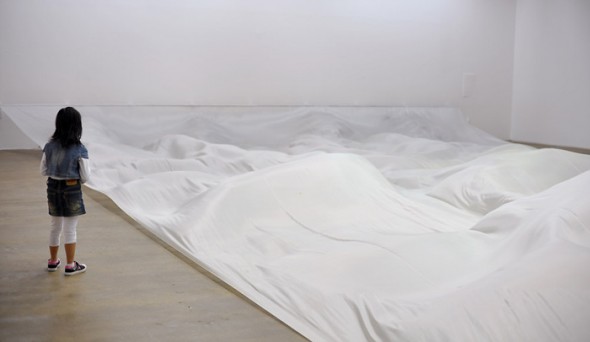
Hans Haacke, Wide White Flow, 1967/2006, electric fans, white silk fabric
… make something which experiences, reacts to its environment, changes, is non-stable…
… make something indeterminate, which always looks different, the shape of which cannot be predicted precisely…
… make something which cannot ‘perform’ without the assistance of its environment…
… make something which reacts to light and temperature changes, is subject to air currents and whose function depends on the forces of gravity…
… make something which the ‘viewer’ handles, with which he plays and thus animates…
… make something which lives in time and makes the ‘viewer’ experience time…
… articulate something natural…
Hans Haacke, Cologne, 1965
Aug 31, 2012 | Categories: Creative Culture, Nature | Comments Off on Hans Haacke, Wide White Flow
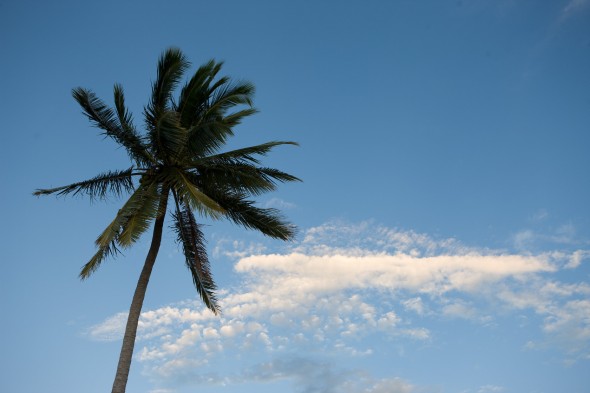 Why would the Harmony Hotel care about what a philosopher and a psychologist have to say about ethics?
Why would the Harmony Hotel care about what a philosopher and a psychologist have to say about ethics?
It’s a question I kept asking myself well into my visit to the beautiful and peaceful property last week with Tamler Sommers. Tamler (the philosopher) and I (the psychologist) had both been invited to stay for a week to participate in the inaugural session of the Philosopher-in-Residence program, courtesy of the Harmony Hotel. The ultimate goal of this program, we learned, is to bring an atmosphere of intellectual curiosity and critical thought to the community of Nosara.
Yet a few days into our stay, I was still wondering whether anyone around us would care about our work. Don’t people go to places like the Harmony Hotel to “turn-off”? To do things like take surf lessons, get massages, and read trashy novels by the pool? If this were my vacation, I thought, I’m not sure I would want to listen to people like me talking about their own research. I honestly wasn’t sure we were worth such a generous invitation.
But then something clicked. After a few days of soaking up the relaxation, I began to understand the value and potential of a program like this. You see, the broad theme of the week’s program—human morality—is one that Tamler and I have spent a significant portion of our lives studying. We’re both intrigued by questions such as why some people believe that an action is right or wrong or that a person is good or bad, and what (if any) implications the answer to these questions might have for what we *ought* to believe. (more…)
Aug 30, 2012 | Categories: Costa Rica, Creative Culture, Harmony Hotel | Comments Off on How I Learned to Stop Worrying and Become a Philosopher-in-Residence
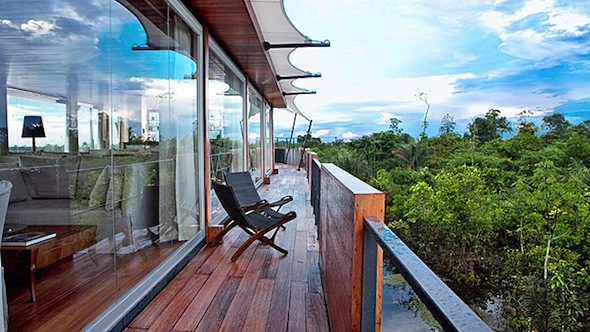 Beginning several years ago, Condé Nast Traveler magazine has given out annual World Savers Awards. This year’s finalists and winners have been chosen. A description:
Beginning several years ago, Condé Nast Traveler magazine has given out annual World Savers Awards. This year’s finalists and winners have been chosen. A description:
They have planted 366,100 trees in 2011 alone, from Australia to Thailand and South Africa. They have helped educate 96,298 students in Kenya, India, and the United States and provided health care to 116,900 people in the Maldives, Mozambique, and Nigeria. In the past two years, they have helped bring safe drinking water to almost 580,000 people in Ethiopia and 50 other countries. No, they are not UN agencies or NGOs. They are the 15 winners and runners-up in our 2012 World Savers Awards…. This year we received a record 111 applications. A panel of independent judges chose the honorees—visionary companies that are making a difference in six areas of social responsibility.
To see the winners in such categories as education, health, poverty, and preservation, click here.
Aug 29, 2012 | Categories: Sustainability, Travel | Comments Off on 2012 World Savers Awards
Aug 28, 2012 | Categories: Creative Culture | Comments Off on The Museum of Ocean and Surf
Architecture students from New York Institute of Technology collaborate with locals in Costa Rica to build a sustainable recycling center.

Click to open slideshow. Images courtesy of Tobias Holler and Ayana de Vos.
The main waste-disposal site in Nosara, Costa Rica, lies at the end of a dusty roadway aptly nicknamed “dump road” by locals. There, jungle gives way to a clearing in a small valley. The full sprawl of the garbage is hidden as one enters; instead, visitors first glimpse a smattering of blue and white trash bags that seems almost picturesque, framed by tall purple-flowering trees, as well as mist coming down from the mountains beyond. But a short walk further into the dump site reveals heaps of unsorted trash: biodegradable waste mixed with plastic bottles, fabric scraps, glass, and metal. Large black birds with white wingtips soar above the refuse. Vultures, explains Tobias Holler. (more…)
Aug 27, 2012 | Categories: Costa Rica, Sustainability | Comments Off on Nosara’s New Recycling Center
 From Yale Environment 360:
From Yale Environment 360:
A warming climate could exacerbate threats facing leatherback turtle populations in the eastern Pacific Ocean, creating conditions that could trigger a 75 percent reduction in turtle numbers by the end of the century, a new study says. Even under existing conditions, turtle births ebb and flow each year, researchers say, with eggs and hatchlings more likely to survive in cooler, rainier seasons, and a greater number of male hatchlings occurring in predominantly female leatherback populations in these conditions. After modeling these population dynamics in light of projected changes in temperature and precipitation in the turtles’ critical nesting areas, particularly the beaches of Costa Rica, researchers from Drexel and Princeton universities projected an increase in egg and hatchling mortality.
To read more, click here–or click here to be taken directly to the academic study, published in Nature Climate Change.
Aug 27, 2012 | Categories: Costa Rica, Nature, Sustainability | Comments Off on Study Suggests Leatherback Turtle Decline

Leanne Shapton's Asphalt Green (Upper East Side Pool), New York City
The New Yorker has posted a slideshow from Leanne Shapton’s new book Swimming Studies. Jordan Awan writes:
Toward the end of the book is a chapter titled simply “Swimming Pools.” It’s a series of seventy-two paintings, each one representing a pool that Shapton remembers swimming in. The paintings abstract the pools to their surface shape, which we see flattened and in perspective from above, as if we are approaching the edge of the pool. That use of perspective, inconspicuous at first look, eventually serves as a constant, subtle reminder to the viewer that what we are interested in is not the pools themselves but the author’s remembered experience of them.
Each painting can stand alone with an iconic quality reminiscent of an early work by Ellsworth Kelly. Taken together, they amount to a memoir-within-a-memoir, a small tour de force of memory, experience, and representation.
Read on.
Aug 24, 2012 | Categories: Creative Culture | Comments Off on Leanne Shapton’s “Swimming Studies”

Casey Kelbaugh for The New York Times
The New York Times is apparently in love with Rockaway Beach. Several articles this summer have celebrated our new “Bushwick on the Beach,” such as “Boardwalk? Try Catwalk” by Guy Trebay in June. Just a few weeks ago there was this riveting article about what happens when the sun goes down:
As the sun dips below the oceanfront high-rises, the beach becomes the brief early-evening domain of stragglers from the daytime, along with can collectors, fishermen, surfers, volleyballers and the treasure hunters armed with metal detectors. Most of them finally head out when darkness moves in.
The newspaper also recently jumped at the opportunity to promote a sand castle building contest hosted by the non-profit arts organization Creative Time with this article. And then they provided full coverage right after here.
Let’s hope the attention brings some much needed revenue to the boardwalk–especially the part of it that hasn’t been repaired since Hurricane Irene last year!
Aug 23, 2012 | Categories: New York City, Surfing | Comments Off on Bushwick on the Beach


 Why would the Harmony Hotel care about what a philosopher and a psychologist have to say about ethics?
Why would the Harmony Hotel care about what a philosopher and a psychologist have to say about ethics?
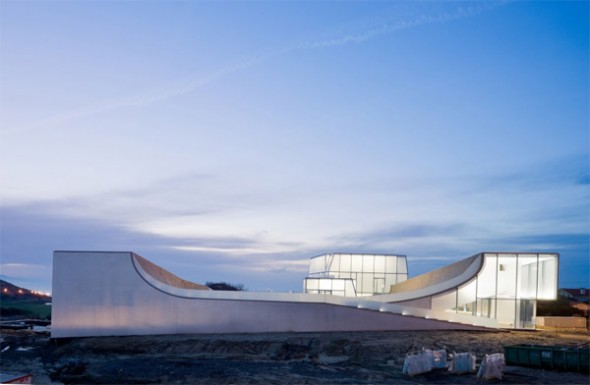
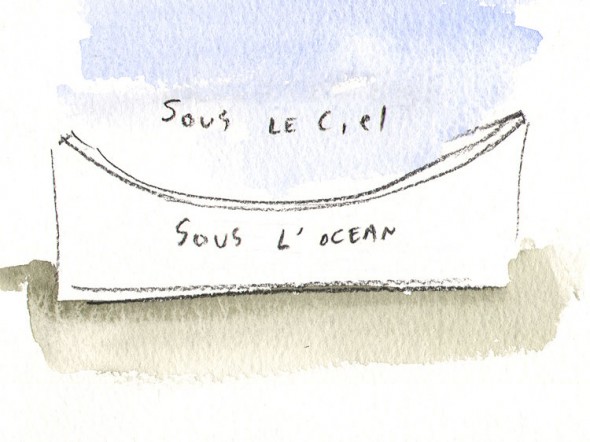 More from the project website
More from the project website 






